
Unfolding: Fabric of our Life
Norberto Roldan
Curated By Takahashi Mizuki
Centre for Heritage Arts & Textile, Hong Kong
Installation Views
Works






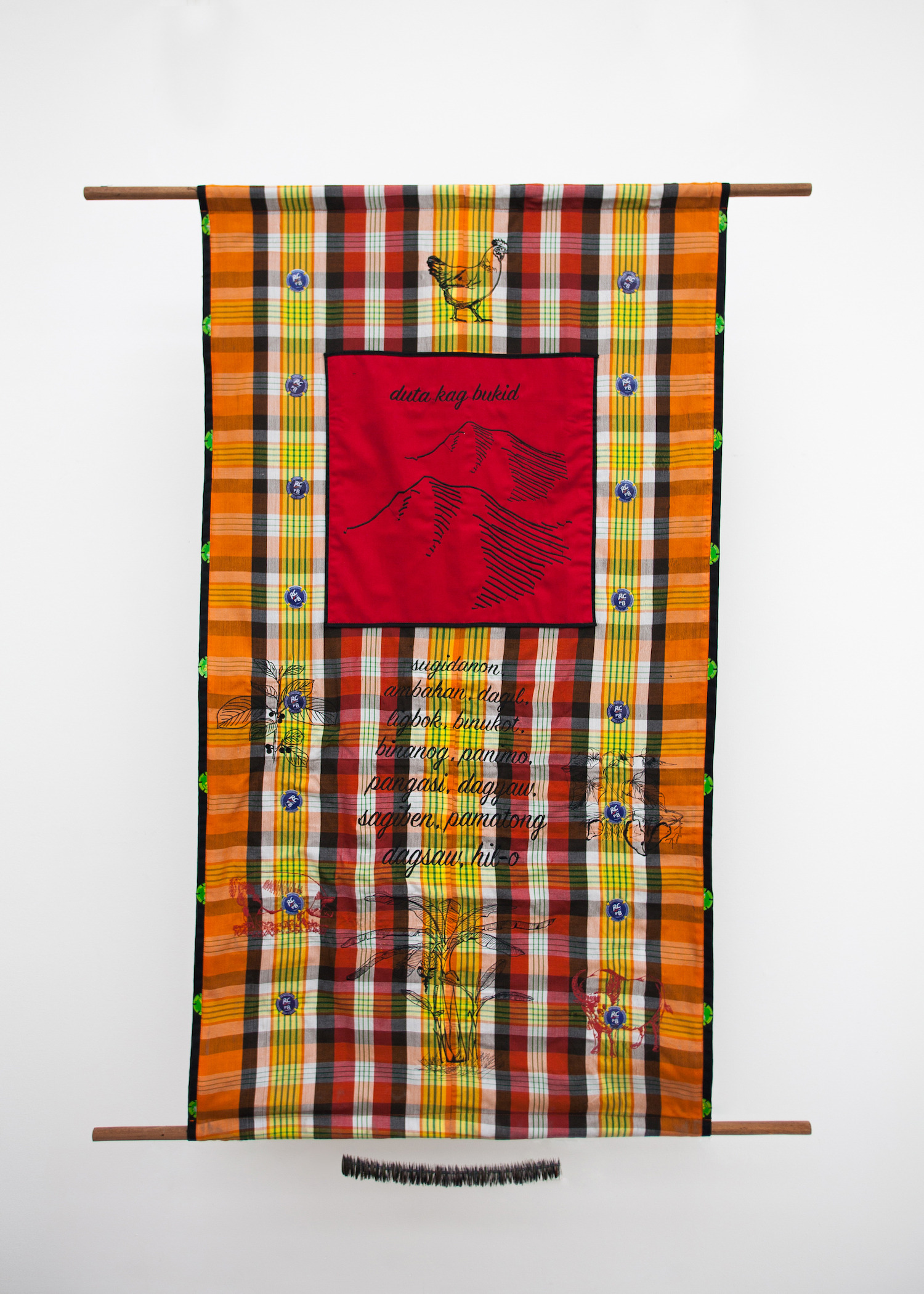
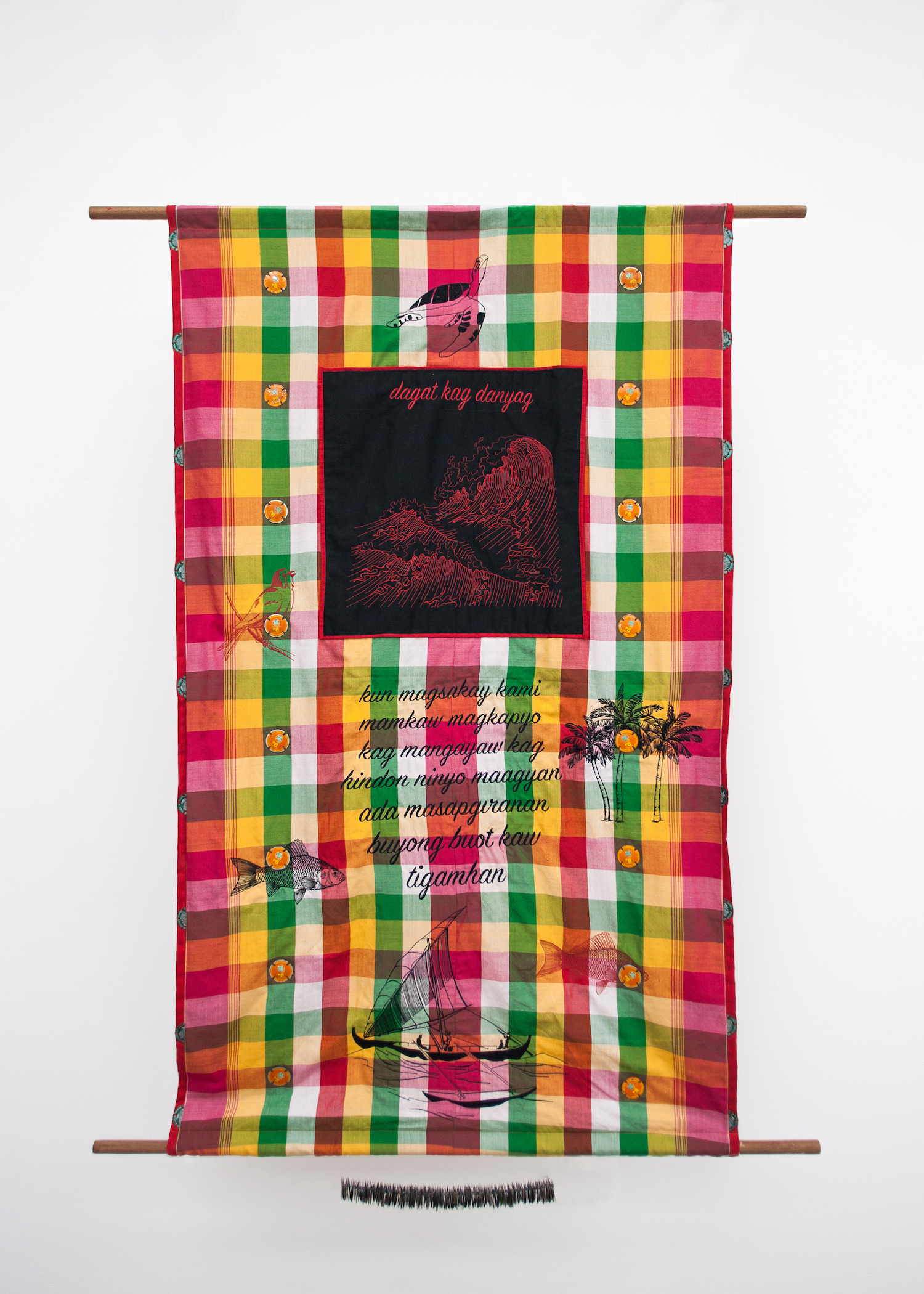
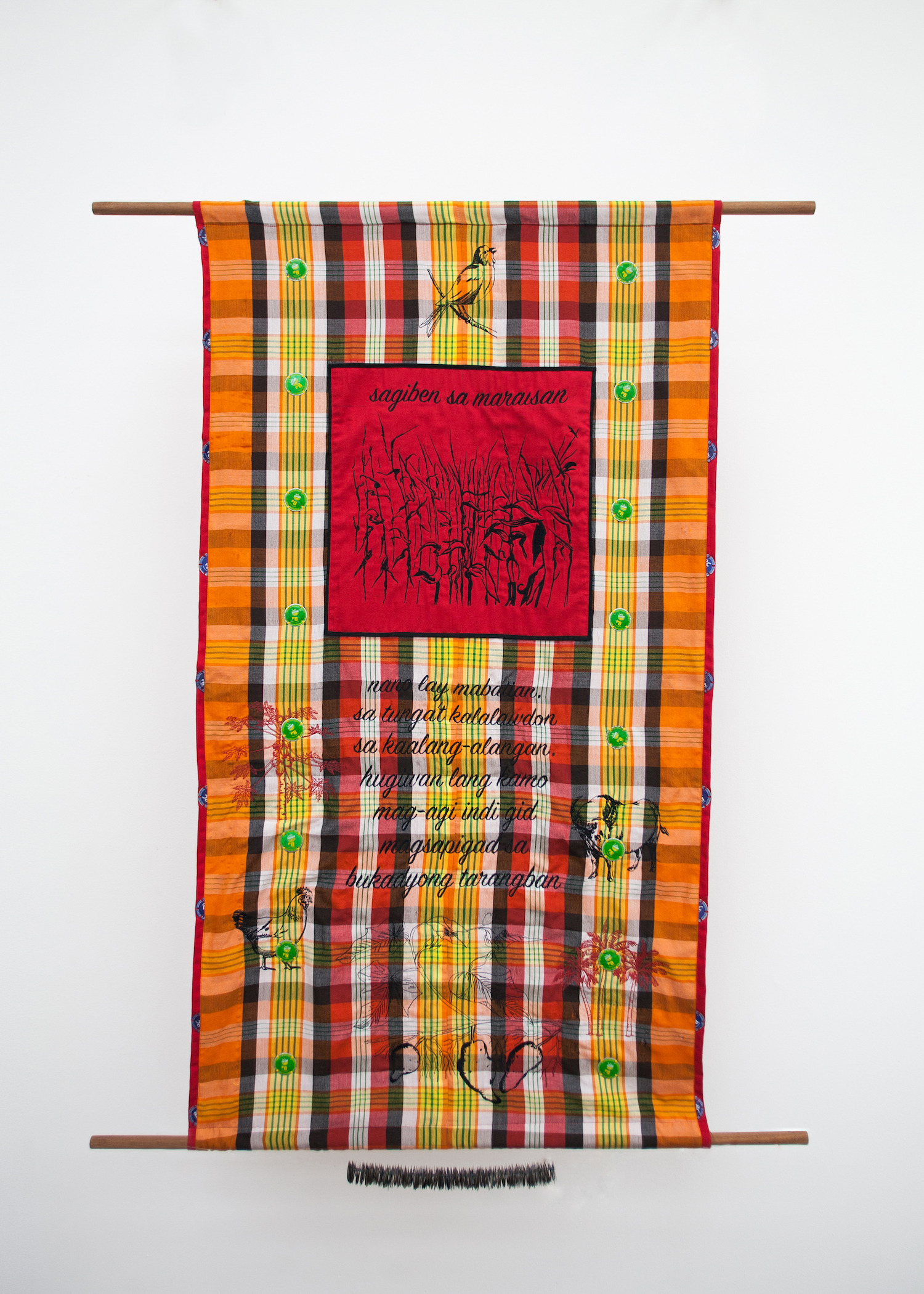
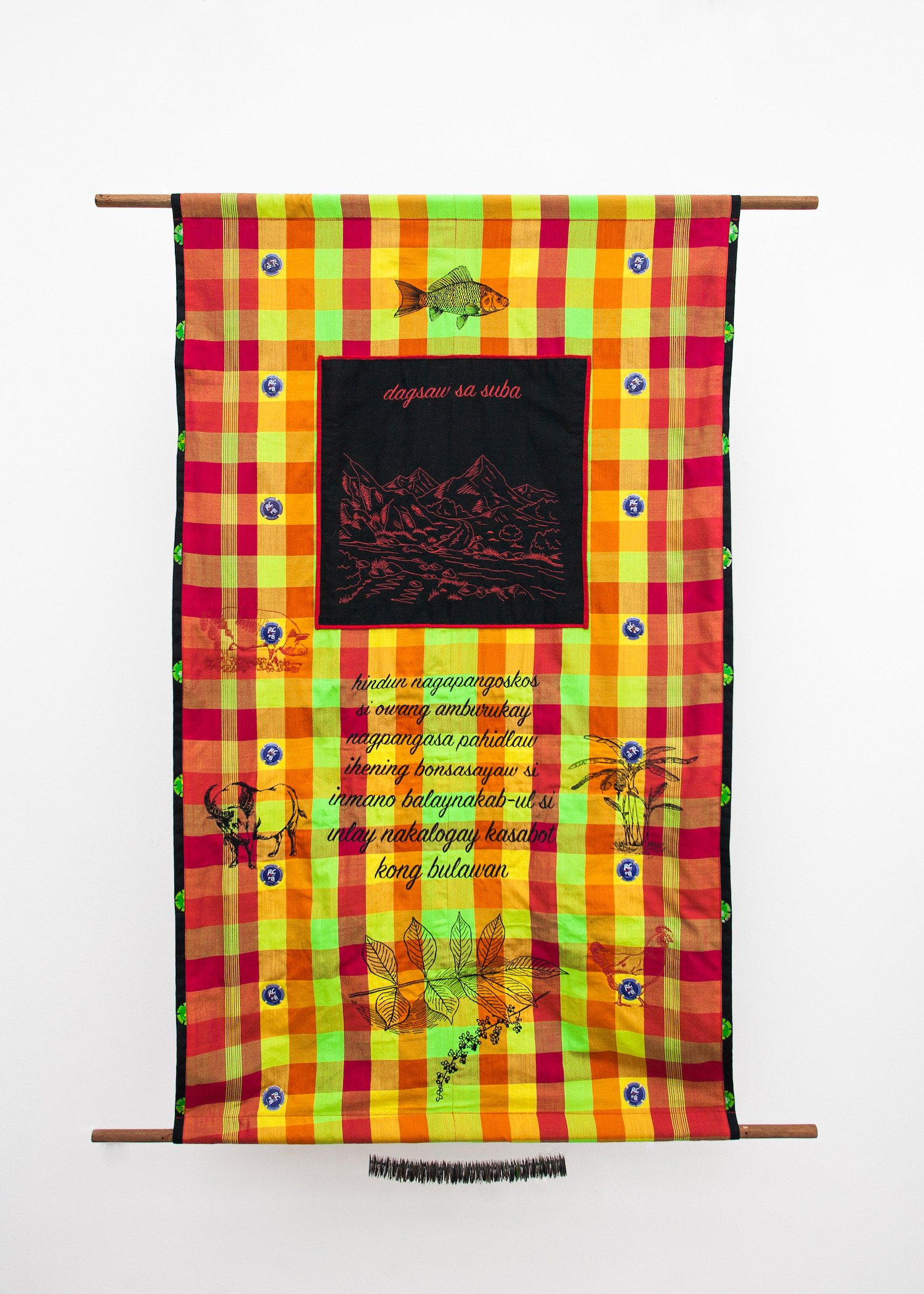
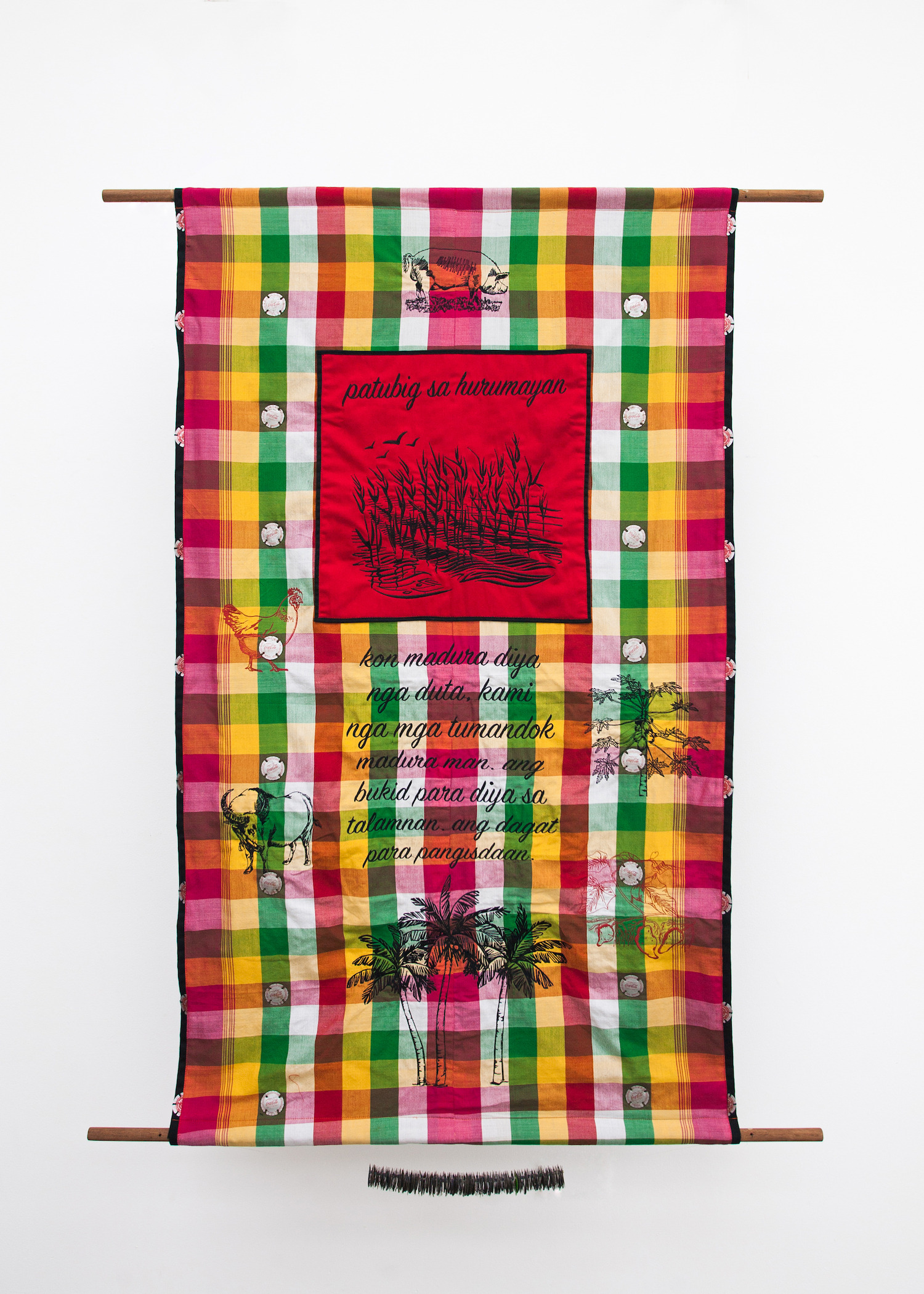
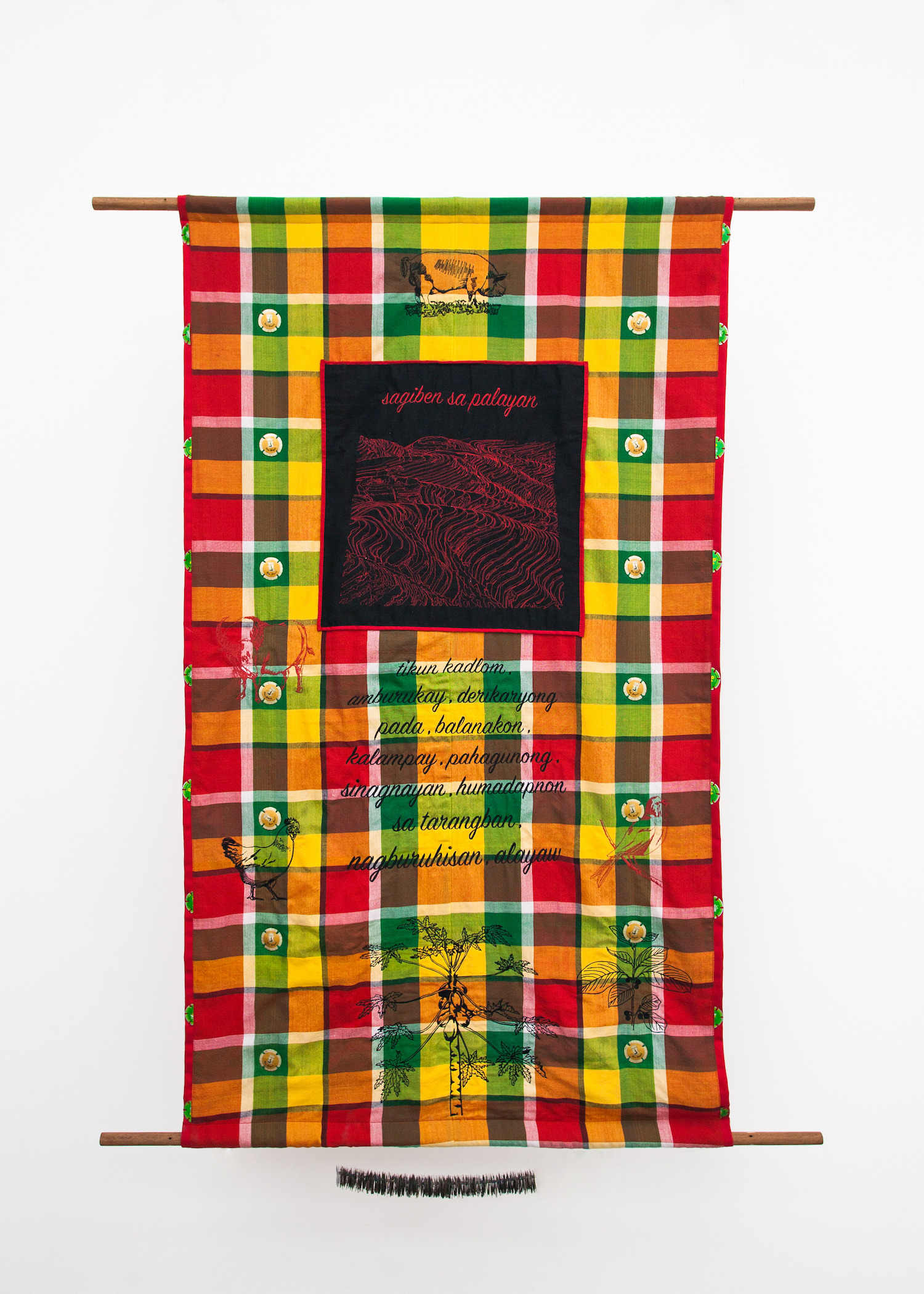
About
CHAT’s inaugural special exhibition, Unfolding : Fabric of Our Life will showcase the works and performances by 17 contemporary artists and collectives who use textile as a testimony of faded facts in modern history, hidden sociopolitical agendas and personal and collective experiences of textile labour in the era of accelerated globalisation. Textiles are such versatile physical materials and can be used so many different ways: the same rectangle of fabric that can be used as a political banner to appeal in the public realm can be also used as a tablecloth for family gatherings. It wraps, folds, covers, shields and protects. Reinvestigating textile materials and techniques in contemporary art, the exhibition aims to stimulate visitors’ imagination regarding the unsung labourers behind textile production.
The translations of the texts embroidered on the square patches of black and white textiles (recent edition), and also with the patches with flower prints (early edition) are the following:
Duta kag Bukid - land and farm
Duta kag Danyag - sea and horizon
Sagiben sa Palayan - ritual on the ricefield
Sagiben sa Maraisan - ritual on the cornfield
Dagyaw sa Suba - ritual on the river
Patubig sa Hurumayan - irrigation on the ricefields
The longer text on Early Edition 6 and Recent Edition 5 is the same: "Kon Madura diya nga duta, kami nga mga Tumandok Madura man." It is the only test that suggests the political conflict that shrouds the land of the indigenous peoples. This particularly text is embedded with other "safer texts" so as not to suggest this series as outright political.
It's direct translation is "If we lose our land, we the indigenous people will vanish."
This statement is attributed to Evelita "Ka Mera" Giganto Geodoria, a Panay Bukidnon, or Tumandok, community leader.
The other longer texts on the rest of the series are excerpts from the epic chant Hinilawod. I don't suggest a literal translation for every phrase since the texts are only meant to provide a visual language rather than a textual language. And since the texts are incomplete sentences and were randomly extricated from an epic, their translations won't make sense if taken separately from the entire chant.
To provide context, Hinilawod is the Hiligaynon epic of Central Panay island in the Visayas (where I come from). It tells the story of adventures of the three brothers Labaw Donggon, Humudapnon, and Dumalapdal, sons of the Goddess Alunsina and the mortal Datu Paubari. They would cross plains, mountains, rivers and valleys to seek the hand of virgins, fight monsters in duels, be enchanted by sorceresses, and test the anger of Gods, before returning to settle down in the heartland of Panay. These fantastic stories remain a significant part of the history told and retold from generation to generation by the Tumandok people of Central Panay. It is through these narratives that they pass on their traditions from their ancestors, including their long history of resistance to foreign colonizers and oppressors from the lowlands.
The Tumandok remain the largest indigenous people's group in Panay. They have a population of 94,000 in the municipalities of Calinog, Jamindan, Lambunao, and Tapaz growing out of the communities that their ancestors have built along the snaking Panay River and the mountainous borders of Capiz and Iloilo. Mostly slash-and-burn farmers with bisaya rice as the main crop, the Tumandok also engage in hunting, fishing, and foraging for fruits and root crops. They practice different forms of communal production in the form of hil-o, dagyaw, or sagiben in agriculture, dagsaw in fishing, and pamantong in hunting.
On the basis of this subsistence economy rooted in a land that is isolated the Tumandok from the rest of society for the most part of history arose a distinct way of life and rich culture. The oral tradition of the Tumandok people gives an account of their legends, community affairs, and agreements. They continue to sing or chant their epics or sugidanon in an archaic dialect called dagil or ligbok. They also carry on the holding of the panimo ceremony before eating newly-harvested rice to appease the spirits. Pangasi or rice winde is prepared for the panimo.
Norberto Roldan
March 2019
Born in 1953 and based in Quezon City, Roldan deploys found objects and images, combining them into traditional local craft and text to make assemblages. As amalgams of personal belongings, collective memories, history and everyday life, Roldan’s pieces present an alternative angle to see the entangled and multi-layered socio-political conditions in his surroundings.
His recent participations in the exhibitions hosted by prominent institutions are No Country: Contemporary Art for South and Southeast Asia at Solomon R. Guggenheim Museum in New York, U.S.A (2012), Between Declarations and Dreams: Art of Southeast Asia Since the 19th Century at National Gallery Singapore (2015), SUNSHOWER: Contemporary Art from Southeast Asia 1980s to Now at National Art Centre, Tokyo, in Japan (2017) and Passion and Procession: Art of the Philippines at Art Gallery of New South Wales in Sydney, Australia (2017).
CHAT (Centre for Heritage, Arts and Textile) is a part of the heritage conservation project of The Mills, the former cotton-spinning mills of Nan Fung Textiles in Tsuen Wan. Through its multifaceted curated programmes, which include exhibitions and co-learning programmes, CHAT aims to be an art centre that weaves creative experiences for all.

